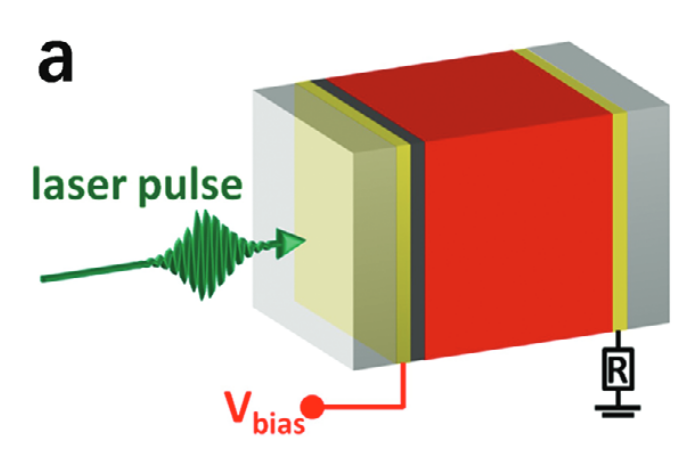 We measured record high charge mobility in a mm-sized organic semiconductors. Semiconducting mesocrystalline bulk polymer specimens that exhibit nearintrinsic properties using channel-die pressing are demonstrated. A predominant edge-on orientation is obtained for poly(3-hexylthiophene-2,5-diyl) (P3HT) throughout 2 mm-thick/wide samples. This persistent mesocrystalline arrangement at macroscopic scales allows reliable evaluation of the electronic charge transport anisotropy along all three crystallographic axes, with high mobilities found along the π-stacking. Indeed, charge-carrier mobilities of up to 2.3 cm2/Vs are measured along the π-stack, which are some of the highest mobilities reported for polymers at low charge-carrier densities (drop-cast films display mobilities of maximum ≈10−3 cm2/Vs). The structural coherence also leads to an unusually well-defined photoluminescence line-shape characteristic of an H-aggregate (measured from the surface perpendicular to the materials flow), rather than the typical HJ-aggregate feature usually found for P3HT. The approach is widely applicable: to electrical conductors and materials used in n-type devices, such as poly{[N,N′-bis(2-octyldodecyl)-naphthalene-1,4,5,8-bis(dicarboximide)2,6-diyl]-alt-5,5′-(2,2′-bithiophene)} (N2200) where the mesocrystalline structure leads to high electron transport along the polymer backbones (≈1.3 cm2/Vs). This versatility and the broad applicability of channel-die pressing signifies its promise as a straightforward, readily scalable method to fabricate bulk semiconducting polymer structures at macroscopic scales with properties typically accessible only by the tedious growth of single crystals. More in https://doi.org/10.1002/adma.202103002
We measured record high charge mobility in a mm-sized organic semiconductors. Semiconducting mesocrystalline bulk polymer specimens that exhibit nearintrinsic properties using channel-die pressing are demonstrated. A predominant edge-on orientation is obtained for poly(3-hexylthiophene-2,5-diyl) (P3HT) throughout 2 mm-thick/wide samples. This persistent mesocrystalline arrangement at macroscopic scales allows reliable evaluation of the electronic charge transport anisotropy along all three crystallographic axes, with high mobilities found along the π-stacking. Indeed, charge-carrier mobilities of up to 2.3 cm2/Vs are measured along the π-stack, which are some of the highest mobilities reported for polymers at low charge-carrier densities (drop-cast films display mobilities of maximum ≈10−3 cm2/Vs). The structural coherence also leads to an unusually well-defined photoluminescence line-shape characteristic of an H-aggregate (measured from the surface perpendicular to the materials flow), rather than the typical HJ-aggregate feature usually found for P3HT. The approach is widely applicable: to electrical conductors and materials used in n-type devices, such as poly{[N,N′-bis(2-octyldodecyl)-naphthalene-1,4,5,8-bis(dicarboximide)2,6-diyl]-alt-5,5′-(2,2′-bithiophene)} (N2200) where the mesocrystalline structure leads to high electron transport along the polymer backbones (≈1.3 cm2/Vs). This versatility and the broad applicability of channel-die pressing signifies its promise as a straightforward, readily scalable method to fabricate bulk semiconducting polymer structures at macroscopic scales with properties typically accessible only by the tedious growth of single crystals. More in https://doi.org/10.1002/adma.202103002
Archives
- May 2025
- July 2024
- March 2024
- August 2023
- June 2023
- November 2021
- April 2021
- March 2021
- January 2021
- December 2020
- September 2020
- May 2020
- December 2018
- November 2017
- September 2017
- August 2017
- March 2017
- January 2017
- October 2016
- June 2016
- October 2015
- March 2015
- October 2014
- April 2014
- January 2014
- June 2013
- May 2013
- January 2013
- September 2012
- July 2012
- June 2012
